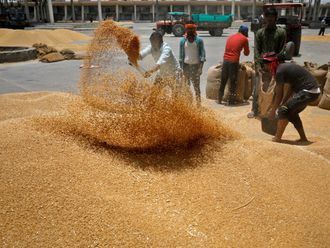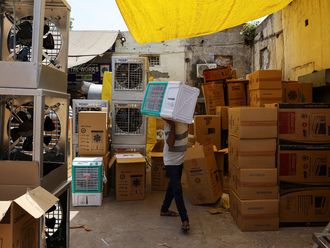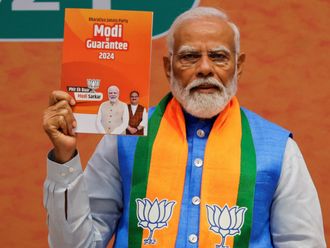Shimla: They have to trudge miles of inhospitable Himalayas to conduct free and fair elections. Yet they have done so year after year with undimmed enthusiasm that echo the enduring spirit of India’s vibrant democracy.
Poll officials say at least 53 out of 7,382 polling stations are scattered over rugged, cold and inhospitable terrain, and their staff have to trek more than seven kilometres to reach a booth.
“For reaching these 53 booths, the poll staff have to fight against all odds — hostile weather, steep gradient, narrow gorges and crevices,” state election department spokesperson Neeraj Sharma told IANS.
He said there are 20 booths across the state where the staff has to trudge distances ranging from 10 to 25km, or sometimes on horseback, from the road-head to take polling material for the May 7 polls.
Most of these booths are located in the interiors of Chamba, Kinnaur, Lahaul-Spiti, Shimla and Kangra districts where even oxygen is minimal.
Poll officials said 4,558 booths are connected by road, while 2,824 are at distances ranging from 500 metres to more than 20km from the road-head.
They say 20 booths in Lahaul-Spiti and 25 in Kinnaur are located at an altitude of 9,000 feet to 15,000 feet above sea level. The Bharmour segment in Chamba district has over a dozen such stations.
Lahaul-Spiti, Kinnaur and Bharmour are part of the sprawling Mandi constituency that covers almost two-thirds of the state.
A total of 333 voters will exercise their franchise at Hikkam in Lahaul-Spiti, one of the country’s highest polling stations located at an altitude of 14,400 feet.
The Hikkam polling station caters to three villages — Komik, Langche and Hikkam — where the night temperature still hovers below freezing. In 2009, it had 321 voters.
Linger polling station with 34 voters has the lowest number of voters in Lahaul-Spiti district, while Taleru booth with 25 voters has the lowest voters in Chamba district.
As many as 7,382 polling stations will be set up in the state out of which 6,855 are in villages. Only 527 are located in urban areas.
Chief Electoral Officer Narender Chauhan said poll parties, polling material and Electronic Voting Machines would be airlifted to the state’s remotest polling station in Bara Bhangal in the Baijnath assembly constituency in Kangra district May 5.
As per electoral rolls, Bara Bhangal has 291 voters.
The Election Commission in December last decided to close the Bara Bhangal booth, located 65km from the last village which is connected by road, and shifted it to Bir, near Palampur town.
On the demand of the locals, it was restored there again.
Chauhan said a special provision was made in which the voters of Bara Bhangal could either cast vote in Bara Bhangal or in Bir.
The total trekking distance between the two polling booths is more than 35km. During the winter most of Bara Bhangal residents migrate to Bir.
In the 2012 assembly elections, 43 people cast votes in Bara Bhangal, but in the 2009 general elections the electorate boycotted the poll for non-fulfilment of their demand to move their village out of the Dhauladhar Wildlife Sanctuary.
Chask-Bhatori polling station in Chamba district is another remote polling station located at a height of 11,709 feet. It is located 18km uphill from the main road and the staff has to walk nearly 10 hours to reach the station.
Swar polling station in Mandi’s Chuhar Valley is located at a distance of 12km from the road. The valley is infamous for cultivation of opium.
The state’s oldest voter Shyam Saran Negi, 97, who voted in the country’s first elections also, will cast his vote at a booth located in the tiny picturesque hamlet of Kalpa in Kinnaur district.
The hill state has 4.74 million voters who will cast their votes in four Lok Sabha constituencies.












